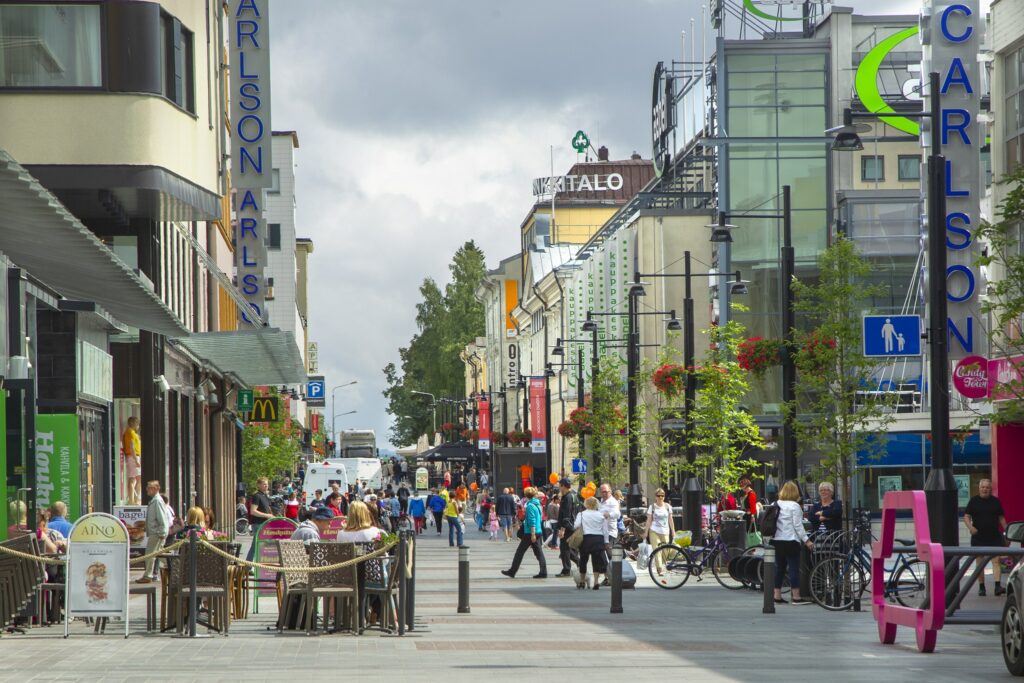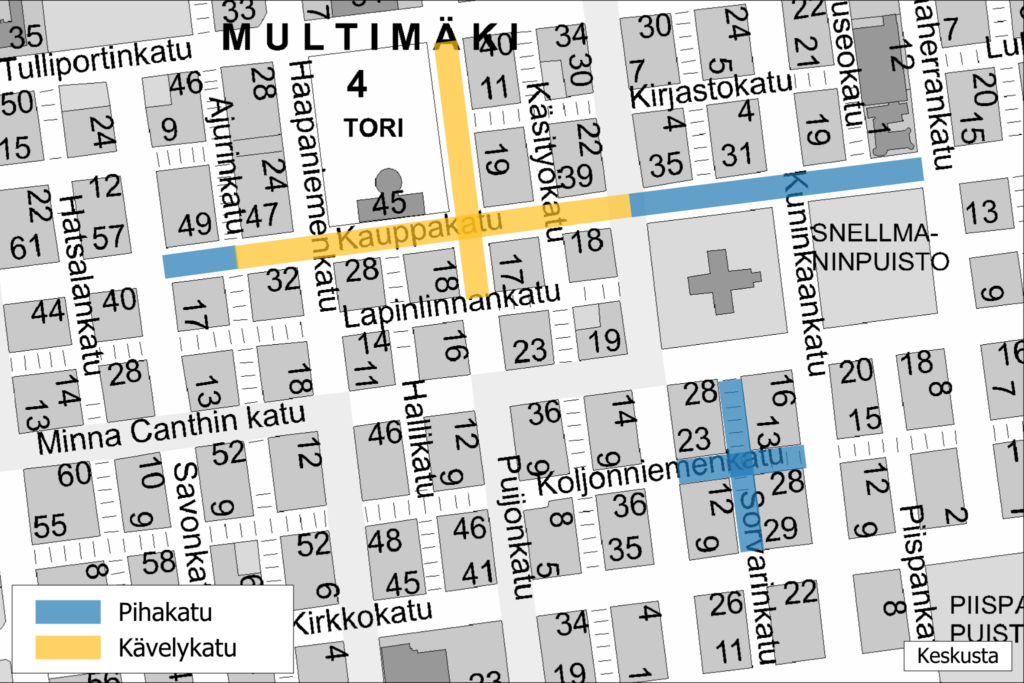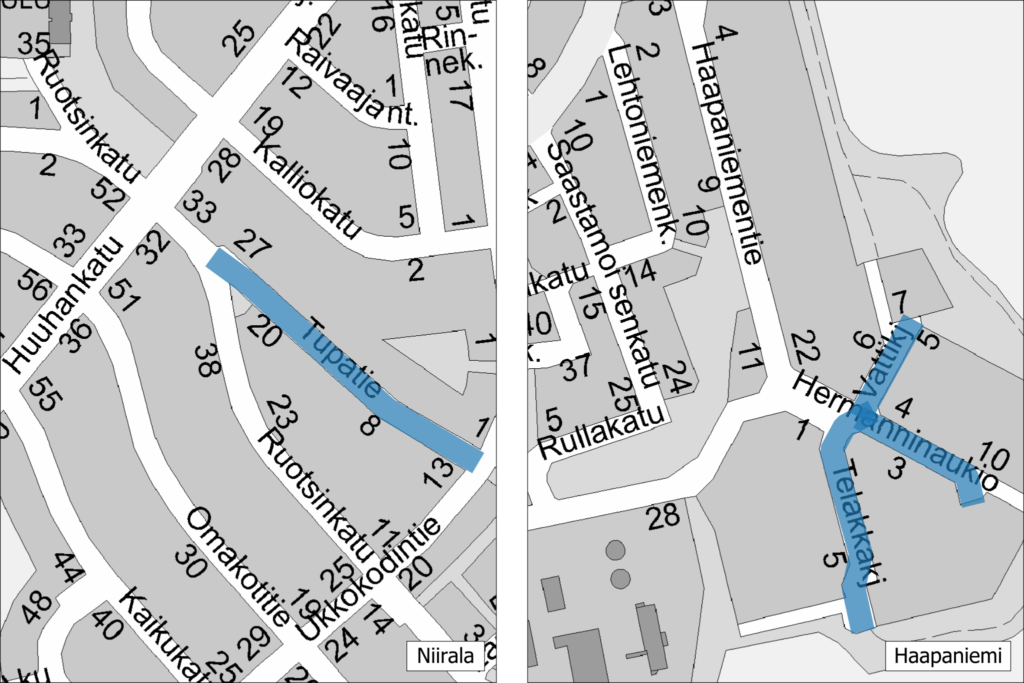Pedestrian and residential streets

Pedestrian streets
A pedestrian street refers to a street reserved for walking and cycling.
The pedestrian streets are Kauppakatu (from Ajurinkatu to Vuorikatu) and Puijonkatu (from Tulliportinkatu to Lapinlinnankatu). A motorised vehicle may only be driven to a property on the street, unless a suitable connection has been arranged for the property through another route. Driving to a plot is allowed between Käsityökatu and Vuorikatu. Parking and stopping of a motorised vehicle on the pedestrian street is prohibited, with the exception of stopping related to service traffic when service traffic is permitted according to the traffic sign.
The speed of both cars and bicycles on the pedestrian street must be adapted to pedestrian speed and must not exceed 20 kmph. On a pedestrian street, the driver of a vehicle must give pedestrians unobstructed passage. Pedestrians can walk on all parts of the pedestrian street. However, they must not unnecessarily prevent vehicle traffic.
Taxis are prohibited on Kauppakatu between Ajurinkatu and Vuorikatu and on Puijonkatu between Tulliportinkatu and Lapinlinnankatu. Service traffic is permitted in the pedestrian centre, with the exception of Kauppakatu between Haapaniemenkatu and Puijonkatu.
Residential streets
Streets marked as residential streets in Kuopio include
- Kauppakatu (from Savonkatu to Ajurinkatu and from Vuorikatu to Maaherrankatu)
- Tupatie (Niirala)
- Telakkakuja-Hermanninaukio-Vanttikuja (Haapaniemi)
- Sorvarinkatu-Koljonniemenkatu (block lineated by Kuninkaankatu, Kirkkokatu, Vuorikatu and Minna Canthin katu)
“A residential street refers to a shared road for pedestrian and vehicular traffic, designated as such a street by traffic signs.”
A motorised vehicle may be driven on a residential street only to a property on the side of the street or for parking.
Parking on a residential street is only permitted in marked parking spaces. Bicycles, mopeds and vehicles with a disabled parking permit may, however, be parked outside the designated parking space if it does not unreasonably hinder movement on the residential street.
The road speed on the residential street must be adapted to the pedestrian traffic and must not exceed 20 kmph. Pedestrians can walk on the residential street on all its parts. However, they must not unnecessarily prevent vehicle traffic.
In order for the residential street to function as intended, it must have special structures, such as narrowings, platforms and plantations, which limit the speed of the vehicles. The driving space must be as narrow as possible.
Pedestrian “kävelykatu” and residential streets “pihakatu” on the map

